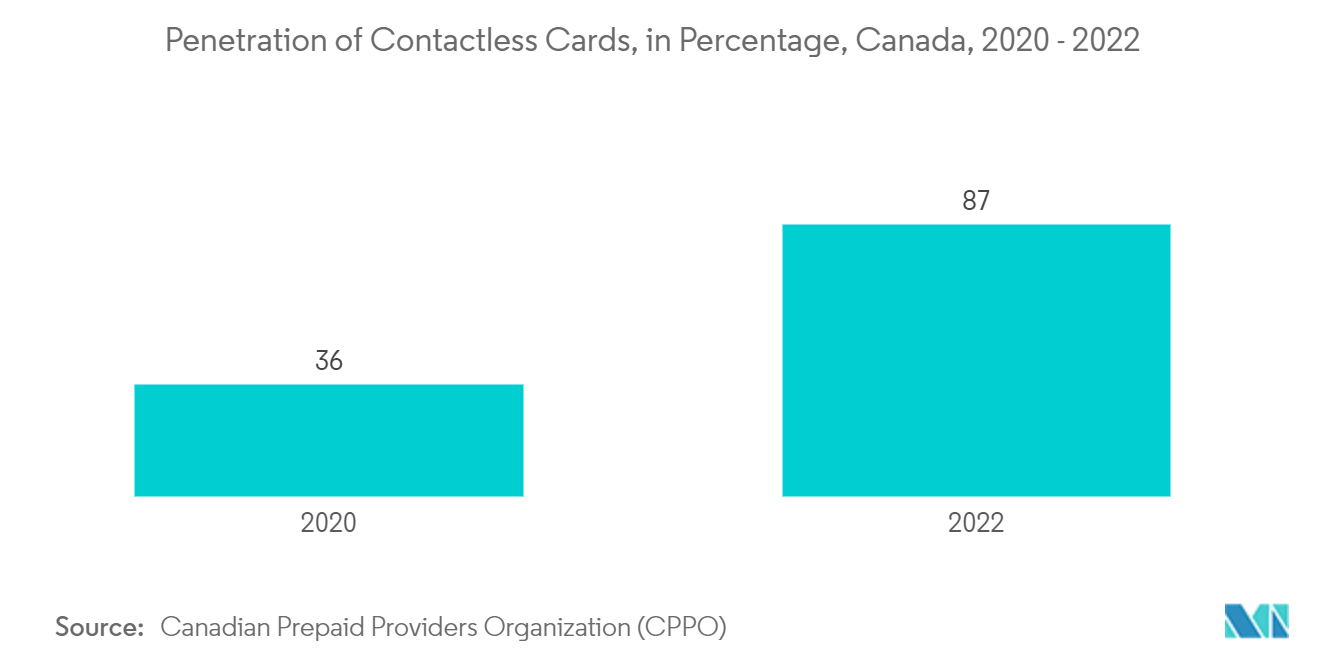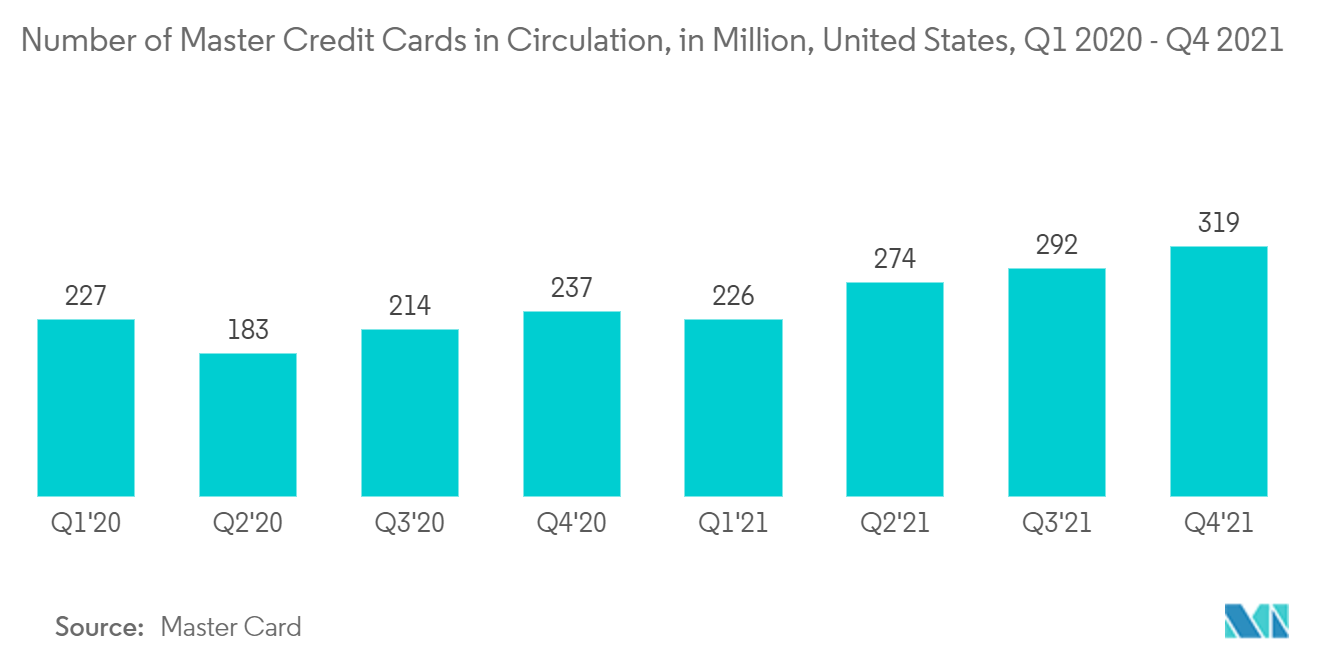Market Trends of North America Smart Card Industry
This section covers the major market trends shaping the North America Smart Card Market according to our research experts:
Contactless Cards are Expected to Drive the Market Growth
- Although contactless payment was also gaining popularity in the North American region before the COVID-19 outbreak, the pandemic has significantly accelerated the adoption rate of contactless cards. Fast forward to 2022, this form of payment has become the new norm as businesses and consumers look toward safer, quicker ways to pay, largely due to COVID-instigated habitual change and evolving payment habits.
- The growing adoption of cashless or digital payments positively influences smart cards in everyday use, such as paying utility bills and prepaid mobile recharge. Several government agencies in the North American region are also promoting smart cards. For instance, the U.S. Federal government has standardized smart cards for employee and contractor identification cards. New identity programs also specify smart cards for citizens, transportation workers, and first responders.
- In Canada, the need for the security of applications that employ critical information, credentials, and documents has also increased the demand for smart cards, which enhance security through encryption. For instance, according to Payments Canada's 2021 report, about 62% of Canadians reported using cash-less rather than pre-pandemic, and 42% now avoid shopping at places wherein contactless payments are not accepted.
- In the United States, by issuing secure contactless smart cards, financial service providers are not only supplying consumers with a more convenient payment mechanism, but they are also increasing transaction volumes by replacing cash, thereby resulting in the significant growth of the contactless smart cards market.

United States to Hold Significant Market Share
- The United States uses many emerging technologies, and the country is making many advancements in smart card technology. One of the most important factors propelling the demand for smart cards in the country is that smart-card-based physical access control systems are powerful and efficient security tools for protecting enterprise assets.
- The private enterprises and government agencies of the United States are increasingly implementing smart card-based access control systems. For instance, the United States Department of Defense (DoD) Common Access Card (CAC) is one of the country's most advanced smart ID card programs. These smart cards serve as the DoD standard identification for active duty military personnel, civilian employees, selected reserve personnel, and eligible contractor personnel.
- Several government agencies in the United States are also leveraging issued CAC and PIV smart cards to e-sign documents for many use cases such as e-contracting, Finance, procurement, and HR, among others. For instance, by inserting their LincPass smartcard into a slot on their keyboard or laptop, USDA employees with smart cards can e-sign documents. Successful authentication by smart card enables them to apply their e-signature to documents for full non-repudiation.
- Across the financial sector of the country as well, the demand for smart cards has been increasing as consumers are increasingly opting for cards that can provide enhanced security as well as new features. The card providers are also actively responding to such trends. For instance, in 2021, Mastercard announced that banks in the United States will no longer be required to issue chip cards with a magnetic stripe starting in 2027.
- As the number of payment cards issued by the banking and financial institutions in the country is increasing, the studied market is expected to be impacted positively during the forecast period. For instance, in Q2 2021, there were about 742 million Visa cards in circulation in the United States (Source: Visa Inc.)
- Furthermore, the Healthcare sector in the United States is at a pivotal point in its development and is propelling the need for smart cards. Smart health cards improve patient information privacy, provide security and a secure carrier for portable medical records, and reduce healthcare fraud. Considering the benefit these card offers, several states have already started adopting smart health cards, the uses of which are expected to grow further in the next few years.


